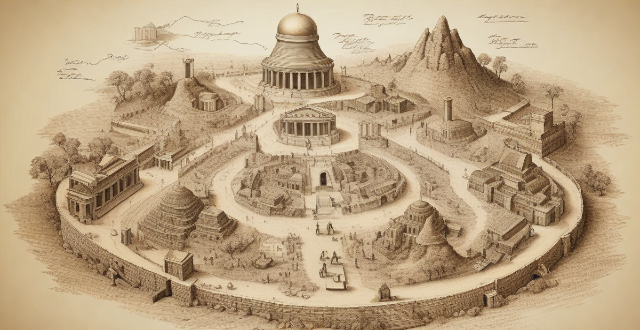South America is home to numerous archaeological sites that offer insights into the lives of ancient civilizations. Some of the most significant sites include Machu Picchu in Peru, Tiwanaku in Bolivia, Chan Chan in Peru, and Caral in Peru. These sites feature a variety of structures such as pyramids, temples, residential areas, and irrigation systems, offering a glimpse into the history and culture of these ancient societies.

The Most Significant Archaeological Sites in South America
South America is a continent rich in history and culture, with numerous archaeological sites that offer insights into the lives of ancient civilizations. Some of the most significant archaeological sites in South America include:
1. Machu Picchu (Peru)
Machu Picchu is one of the most famous archaeological sites in the world, located high in the Andes Mountains of Peru. It was built by the Incas in the 15th century as a royal estate and later abandoned during the Spanish conquest. Today, it attracts millions of tourists every year and is considered one of the new Seven Wonders of the World.
Features of Machu Picchu:
- Inca Trail: A popular hiking trail leading to Machu Picchu, offering stunning views of the mountains and valleys.
- Intihuatana: A stone structure used by the Incas for astronomical observations.
- Temple of the Sun: A complex of buildings dedicated to the sun god, Inti.
- Sacred Plaza: A central square where religious ceremonies were held.
2. Tiwanaku (Bolivia)
Tiwanaku is an ancient city located near Lake Titicaca in Bolivia, dating back to around 500 AD. It was once a major center of religion and trade for the Tiwanaku civilization, which spread across much of western South America.
Features of Tiwanaku:
- Puerta del Sol: A massive gateway made from stone blocks, marking the entrance to the city.
- Akapana Pyramid: A large pyramid believed to have been used for ritual purposes.
- Kalasasaya Temple: A temple complex consisting of several structures, including a sunken court and an altar.
- Semi-subterranean Buildings: Buildings partially buried underground, possibly used for storage or ritual activities.
3. Chan Chan (Peru)
Chan Chan is an ancient city located in northern Peru, built by the Chimu civilization between 850 and 1470 AD. It served as the capital of the Chimu Empire and was later conquered by the Incas.
Features of Chan Chan:
- Ciudadelas: Walled compounds within the city, each containing multiple buildings and courtyards.
- Tschudi Complex: One of the largest ciudadelas, featuring intricate friezes and carvings.
- Huaca La Esmeralda: A U-shaped temple structure with a large open courtyard.
- Temple of the Sun: A stepped pyramid believed to have been used for religious ceremonies.
4. Caral (Peru)
Caral is an archaeological site located in the Supe Valley of Peru, dating back to around 2600 BC. It is one of the oldest known cities in the Americas and was home to the Norte Chico civilization.
Features of Caral:
- Pyramids: Six large pyramids constructed using adobe bricks, some reaching up to 20 meters tall.
- Sanctuaries: Religious structures located on top of some of the pyramids, featuring stone altars and offering tables.
- Residential Areas: Areas where people lived, complete with houses, workshops, and storage facilities.
- Irrigation Systems: Advanced irrigation systems used to water crops and support agriculture in the region.